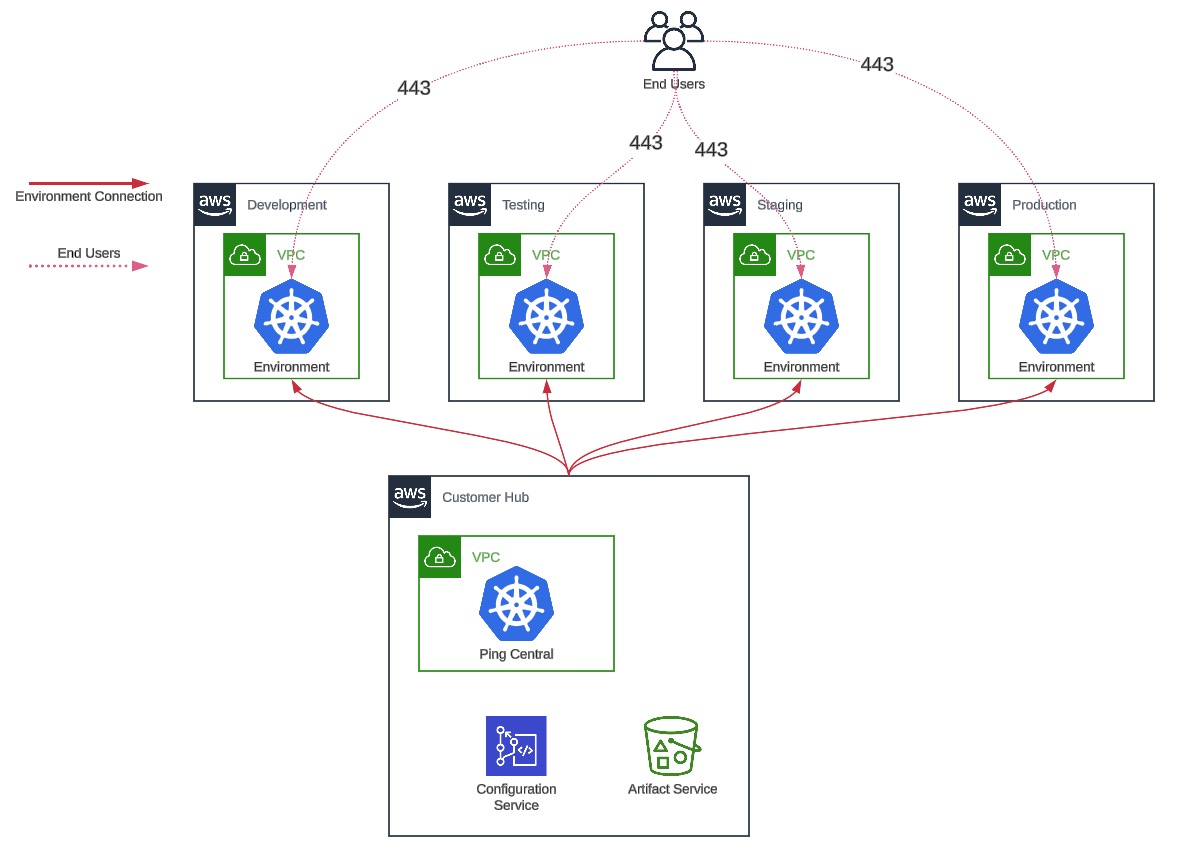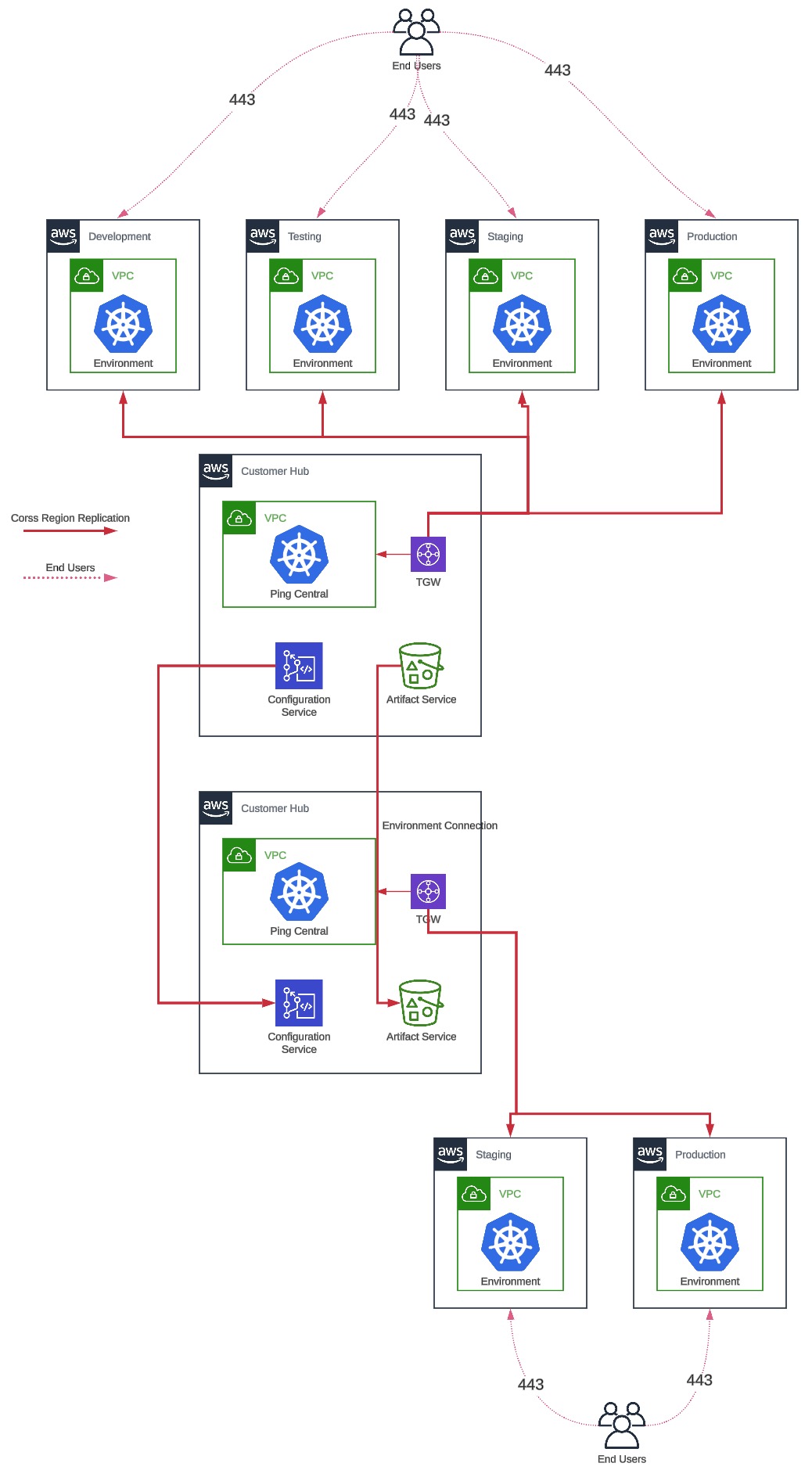Regions and deployment models
The regions available to you depend on how your account is set up. AWS provides a wide variety of available regions, and although PingOne Advanced Services runs within the AWS framework, not all of these regions are supported in PingOne Advanced Services.
The following table lists the regions supported.
| Region group | Code (region) | Name |
|---|---|---|
Asia |
ap-Southeast-1 (url region "sg1" ) |
Asia Pacific (Singapore) |
ap-Southeast-2 (url region "au1" ) |
Asia Pacific (Sydney) |
|
ap-Southeast-4 (url region "au2") |
Asia Pacific (Melbourne) |
|
Canada |
ca-Central-1 (url region "ca1" ) |
Canada (Central) |
Europe |
eu-Central-1 (url region "eu1" ) |
Europe (Frankfurt) |
eu-West-1 (url region "eu2" ) |
Europe (Ireland) |
|
United States |
us-East-2 (url region "us1" ) |
US East (Ohio) |
us-West-2 (url region "us2" ) |
US West (Oregon) |
Region deployment models
Regions can be deployed in a variety of ways, and it’s important to choose the model right for you. You can have up to three different regions in a global cluster, or you can deploy close to your user’s geographic locations to reduce network latency.
-
Single-region deployments: With this model, the platform is deployed in 1 of our supported regions. Within each region, the platform is deployed across three availability zones, which are active-active-active within a region.
Network diagram

-
Multi-region siloed deployments: With this model, the platform is deployed in multiple regions, but each region is independent of the others. There is no global cluster. For example, you can have a US region and an EU region, but there is no synchronization between them. Each region has its own administrative accounts and changes must be made manually.
You might also want your multi-region deployments to remain separate from others. For example, you can have 2 US multi-region deployments and 2 EU multi-region deployments that are siloed from each other and do not communicate.
-
Multi-region clustered deployments: With this model, the platform can be deployed in up to three different regions in a global cluster, and data and configurations are synchronized across regions using the active-active model, or the active-active-active model, depending on the type of deployment. Note that the Dev and Test environments are always deployed in a single-region format, and Stage and Prod environments are deployed in a multi-region format.
Network diagram
